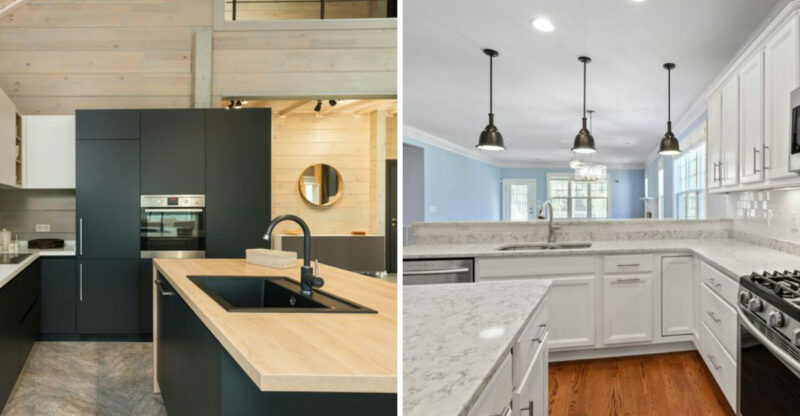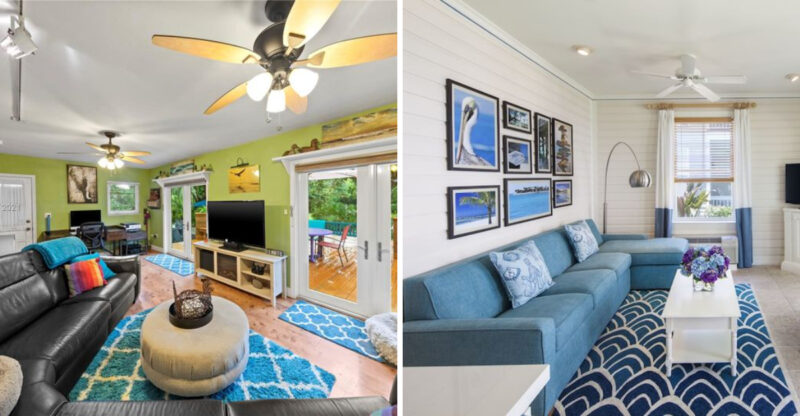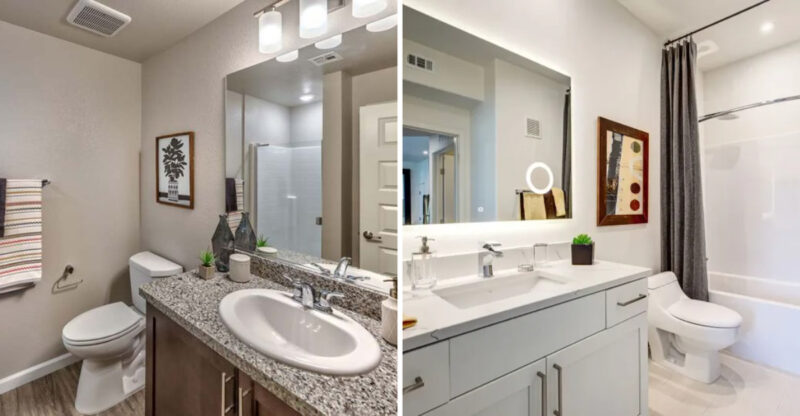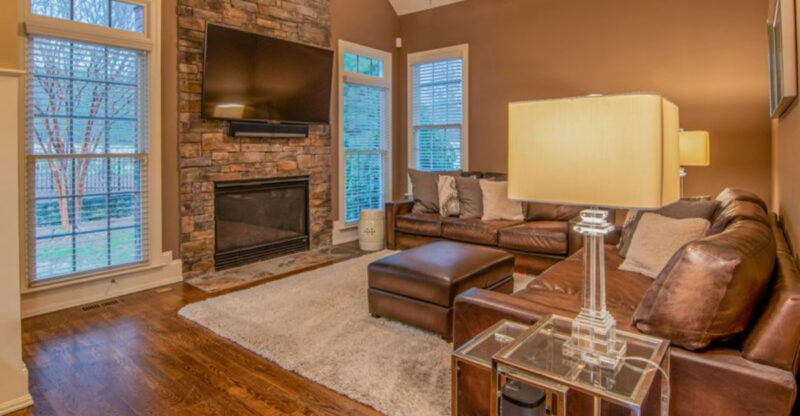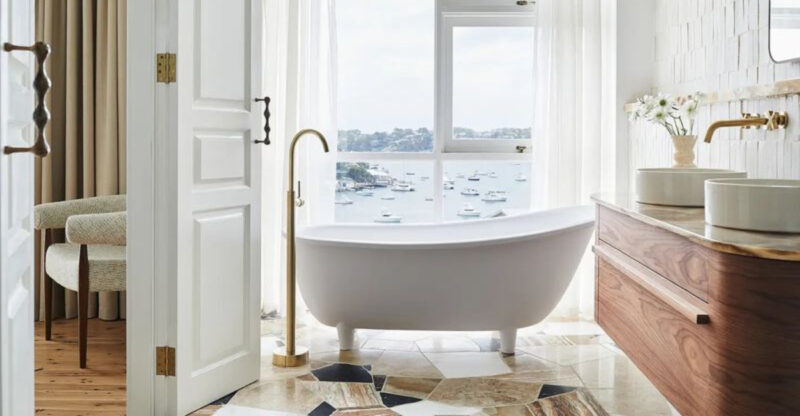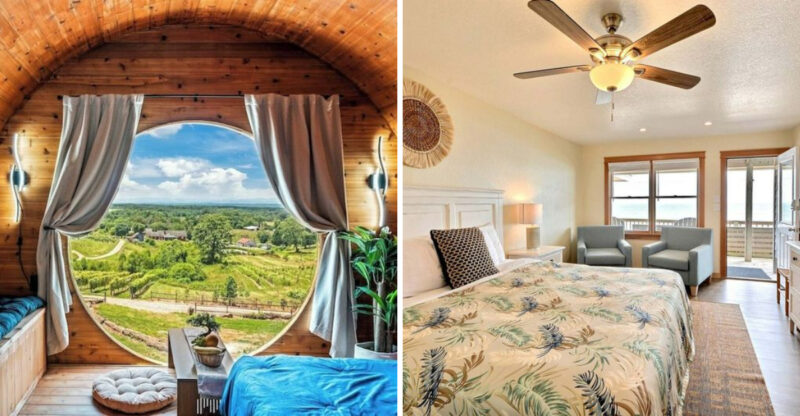9 Kitchen Tweaks That Could Bring Midcentury Modern Vibes
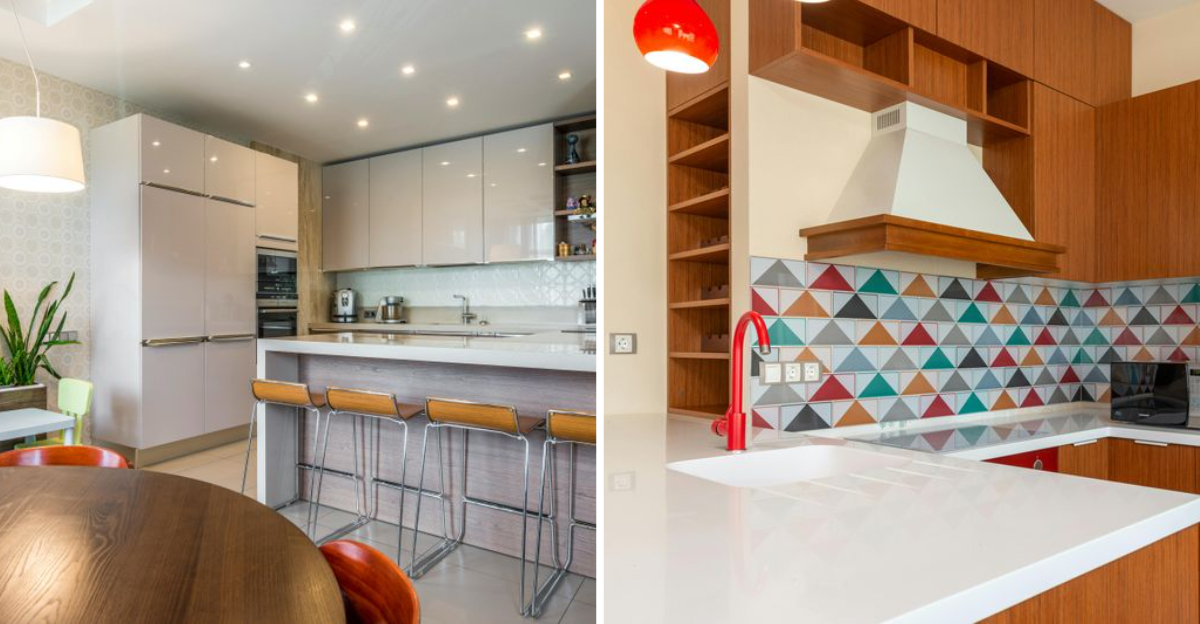
Midcentury modern design never really goes out of style. Its clean lines, organic shapes, and balance of form and function make it timeless and perpetually appealing.
If you want to give your kitchen a 1950s–60s vibe without a full renovation, there are plenty of affordable ways to do it. These 9 simple tweaks can turn your cooking space into a midcentury-inspired marvel, though results may vary depending on your kitchen’s layout, size, and existing features.
1. Sleek Flat-Front Cabinets
Nothing says midcentury modern like flat-panel cabinet doors with minimal ornamentation. These streamlined beauties instantly transport your kitchen back to the era of atomic design and Space Age optimism.
When choosing these cabinets, opt for warm-toned wood like walnut or teak for authentic midcentury appeal. If wood isn’t in your budget, consider wood veneer or even painted flat-front cabinets in muted earth tones.
Hardware can be minimal or even absent with push-latch mechanisms. Many midcentury kitchens featured cabinets with simple finger pulls routed into the top or bottom edges, eliminating the need for handles altogether while maintaining that coveted clean-lined silhouette.
2. Warm Wood Accents
Incorporating warm wood tones creates that quintessential midcentury coziness instantly. Teak, walnut, and oak were the holy trinity of midcentury materials, appearing everywhere from cabinet fronts to floating shelves.
I recommend starting small with wooden serving bowls, cutting boards, or even a vintage bread box displayed on your counter. For a bigger statement, consider adding a wood-slat room divider between kitchen and dining areas or installing a wooden ceiling feature.
The beauty of midcentury wood is in its honest presentation choose pieces that showcase natural grain patterns rather than heavily distressed or painted options. This authenticity was central to midcentury philosophy, where materials were celebrated for their inherent qualities.
3. Geometric Backsplash Tiles
Geometric patterns bring instant midcentury energy to any kitchen space. Square tiles arranged in diamond patterns, hexagonal mosaics, or elongated subway tiles with staggered arrangements all channel that vintage vibe perfectly.
Colors matter tremendously when selecting these tiles. Think earthy tones like mustard yellow, avocado green, or burnt orange for maximum authenticity. If bold colors feel too committed, try white tiles with colored grout or a subtle pattern in neutral tones.
Many homeowners find that limiting geometric tiles to a small area creates the perfect balance. Try installing them behind your stove as a focal point while keeping the rest of the backsplash simple. This approach provides that midcentury punch without overwhelming your space.
4. Minimalist Hardware
Hardware from the midcentury era embodied the perfect marriage of form and function. Slim, horizontal drawer pulls in brushed brass or matte black instantly evoke that vintage aesthetic without major construction.
When shopping for these pieces, look for clean lines and minimal ornamentation. Many authentic midcentury handles feature slight tapers or gentle curves that soften their appearance while maintaining simplicity. Some cabinets even used recessed finger pulls small indentations that eliminated hardware entirely.
If you’re feeling adventurous, mix materials for visual interest. Perhaps brass pulls on upper cabinets with black on lowers, or wood knobs on pantry doors with metal elsewhere. This playful approach to materials was a hallmark of midcentury design that still feels fresh today.
5. Pendant Lighting with Retro Shapes
Lighting might be the easiest way to inject midcentury charm into your kitchen. Sputnik-inspired chandeliers, globe pendants, and cone-shaped fixtures instantly create that nostalgic atmosphere without major renovations.
Materials matter tremendously when selecting these statement pieces. Look for opal glass, brushed brass, or even colorful enameled metal options that were popular during the era. Many authentic designs combined multiple materials, like wood accents with metal frames holding glass diffusers.
Height is another important consideration for maximum impact. Hang pendants lower over islands or dining areas to create intimate zones within open-concept kitchens. This technique was frequently employed in midcentury homes to define spaces while maintaining visual flow a design principle that works beautifully in today’s homes too.
6. Open Shelving
Midcentury kitchens often featured a mix of closed storage and strategic open shelving. This approach wasn’t just practical it created opportunities to display colorful dishware and decorative items that added personality to the space.
Installing floating wood shelves (especially in walnut or teak) creates instant midcentury appeal. The key is keeping them relatively thin and mounting them with minimal or invisible hardware. For bonus points, consider shelves with slight upturned edges or subtle curves that echo furniture designs from the era.
What you display matters just as much as the shelves themselves. Arrange colorful Fiestaware, Scandinavian enamelware, or vintage glassware in organized groupings. Even everyday items become design elements when thoughtfully arranged a philosophy that defined the practical yet beautiful midcentury approach to kitchen design.
7. Clean-Lined Countertops
Simplicity reigned supreme in midcentury kitchens, with countertops featuring clean lines and minimal detailing. Terrazzo is experiencing a major comeback and offers authentic midcentury appeal with its speckled, composite surface that adds subtle visual interest without overwhelming the space.
If terrazzo feels too committed, consider solid-surface options in white or light neutral tones. The key is avoiding busy patterns or heavy veining that would feel out of place in a midcentury kitchen. Many homeowners opt for simple laminate countertops a budget-friendly choice that’s actually period-appropriate!
Edge profiles should remain simple as well think straight edges or minimal waterfall edges rather than elaborate ogee or bullnose profiles. This restraint in detailing allows other elements in your kitchen to shine while maintaining that coveted midcentury simplicity.
8. Vintage Bar Stools
Bar stools might be the easiest way to inject midcentury personality into your kitchen. Those iconic hairpin legs or bent plywood seats instantly communicate the era’s design language without a major commitment.
When hunting for these pieces, look for organic shapes with gentle curves that follow the body’s contours. Many authentic designs featured seats that swiveled or adjusted in height with exposed mechanical elements celebrating function as part of the aesthetic rather than hiding it.
If vintage hunting isn’t your thing, numerous manufacturers offer faithful reproductions of classic designs. The best versions maintain the original proportions while updating materials for durability. Even budget-friendly options can capture the essence of midcentury style through simple silhouettes and warm wood tones paired with black or brass metal frames.
9. Statement Clock or Wall Art
Midcentury kitchens weren’t just functional spaces they expressed personality through carefully chosen decorative elements. A starburst clock or abstract geometric artwork instantly communicates midcentury style while adding visual interest to blank walls.
When selecting these pieces, look for designs that embrace midcentury motifs like atomic starbursts, boomerang shapes, or abstract compositions with organic forms. Materials matter too pieces incorporating teak, brass, or colorful enamels feel especially authentic to the period.
Position is everything for maximum impact. Center a statement clock above a doorway or in a visible spot from your main cooking area. For artwork, consider creating a small gallery wall with thematically linked pieces perhaps vintage advertisement prints for kitchen products or abstract compositions in coordinating colors that pull from other elements in your space.

